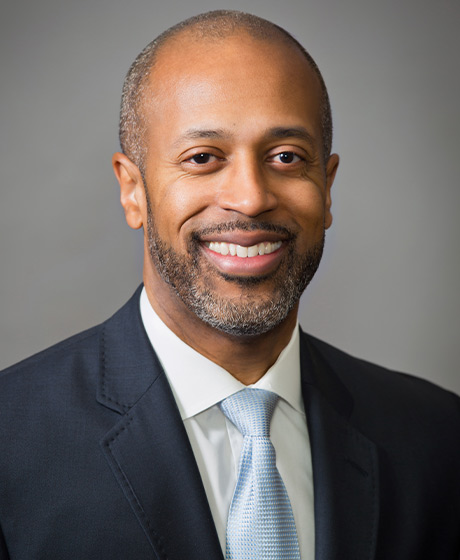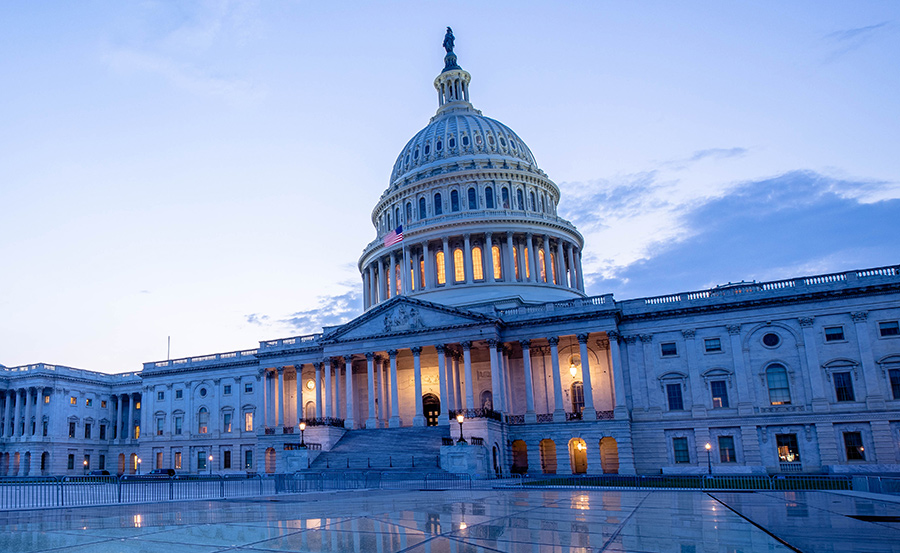
by Vernon M. Billy
New CSBA research shows that governing boards have allocated federal funds to support student needs, despite structural, labor market and regulatory challenges
his spring, CSBA and our partners at the Association of California School Administrators (ACSA), had the honor of leading the inaugural edition of the Coast2Coast Federal Advocacy Trip in Washington, D.C. It was a richly rewarding experience and the first of what will become annual event.
It was inspiring to see CSBA’s members in our nation’s capital, demonstrating their deep knowledge of California schools and their tremendous passion for public education. Participants advocated for solutions to a wide range of issues including the educator shortage, special education school nutrition programs, student privacy and cybersecurity, broadband access and flexibility for Elementary and Secondary School Emergency Relief funds (ESSER). This work is essential to ensure that California’s education system receives the respect and resources befitting a state that educates one of every eight public school students in the United States.

This wasn’t the first time we had considered that question — in fact we had already asked it ourselves and set out to find an answer. This quest was driven by curiosity about the impact of COVID relief funds as well as to get ahead of a narrative that we knew would be coming. We believed, correctly so, that a narrative would emerge that focused on criticizing school districts and county offices of education for sitting on the funds like Scrooge McDuck, and therefore did not need the additional money. The fact that this narrative did start to germinate didn’t sit well with us and didn’t reflect what was happening in the field and the reasons behind the spending habits of LEAs. Yet, we didn’t want to jump to conclusions without having the data to support them. In order to gather more information, we developed research aimed at determining answers to four central questions:
1. Is COVID relief funding being spent at an acceptable pace when viewed in context?
2. How are the relief funds being spent?
3. What are the challenges to allocation and implementation of COVID relief funds?
4. What advocacy can CSBA undertake to improve the COVID relief funding process and facilitate implementation?
The research includes both an analysis of LEAs’ federal relief funding expenditures and a survey that was sent to superintendents throughout California. The responses to these questions illuminated the challenges presented by ESSER and other forms of COVID relief funding as well as the various policies and regulations governing California schools. At the time of this writing, CSBA is in the process of using the data and stories from your research to write what we believe will be the most comprehensive report documenting the use of COVID relief funds by California school districts. The full findings are too numerous and nuanced to detail here, but certain conclusions jumped out from the data, and I feel compelled to share them with you.
First, LEAs are aggressively spending down early relief packages and are almost finished with their ESSER I allocations. Second, we can see that districts were responsive to changes in surrounding conditions because they allocated funds differently as they moved through various stages of the pandemic. Third, flexibility on spending rules is critical so that districts have the ability to change course to meet the shifting needs of students, staff and community. Finally, school districts and county offices of education have not been able to invest everywhere they would like because of factors beyond their control.
Prominent among the constraints that LEAs cited were concerns over the sustainability of any investments made with COVID relief funds, the risk of allocating one-time funds toward ongoing expenses, an inability to find candidates for a range of certificated and classified positions, the potential for burnout when asking teachers to take on new programmatic responsibilities, and confusing and cumbersome reporting requirements. Despite these challenges, most LEAs do not anticipate that spending down relief funding will be a problem, which shouldn’t surprise those who closely follow public schools and know the deep financial holes out of which schools are trying to dig. Two years of generous school funding, much of it one-time money, will not remedy 40 years of underinvestment in public schools, nor will it reverse the effects of a pandemic that is destined to have a generational impact on our society.
It’s clear that LEAs are looking at the long term when grappling with the effects of the pandemic. Our survey respondents identified mental health programs and supports as the most important services to retain after relief funding runs out. Yet, the quandary is that, despite the great desire for mental health services, a lack of qualified candidates is making it difficult for LEAs to staff these positions as required to meet the need. This is one reason why many LEAs requested extensions for spending deadlines — a fact we communicated to federal officials on our trip to Washington D.C.
This request was partially granted in mid-May, when the U.S. Department of Education began considering applications from LEAs to extend the deadline of the ARP ESSER III by an additional 18 months. The original deadline was Sept. 30, 2024, and although schools will still need to reserve funds by that date, approved school districts will now have until spring 2026 or even longer if they’re encountering “extraordinary circumstances,” according to the Department of Education. The extension is designed to help school districts whose efforts to spend their grant money have been hampered by staffing shortages, supply chain issues, inflation and other obstacles.
The extension is just another indication that if we raise our collective voice loud enough, it can echo from the four corners of the state to Sacramento and all the way to Washington, D.C. We won’t prevail in every battle, but we can come armed with the data and examples to make our case for California public schools. You can also improve your situation at the local level if you push back vigorously against the idea that schools have been sluggish or indifferent in allocating COVID relief dollars.
Information is power and LEA participation in initiatives like CSBA’s COVID relief funding survey allow us to be more effective advocates on your behalf and help us rewrite false narratives that undersell the important work you are doing for California’s public school students.
